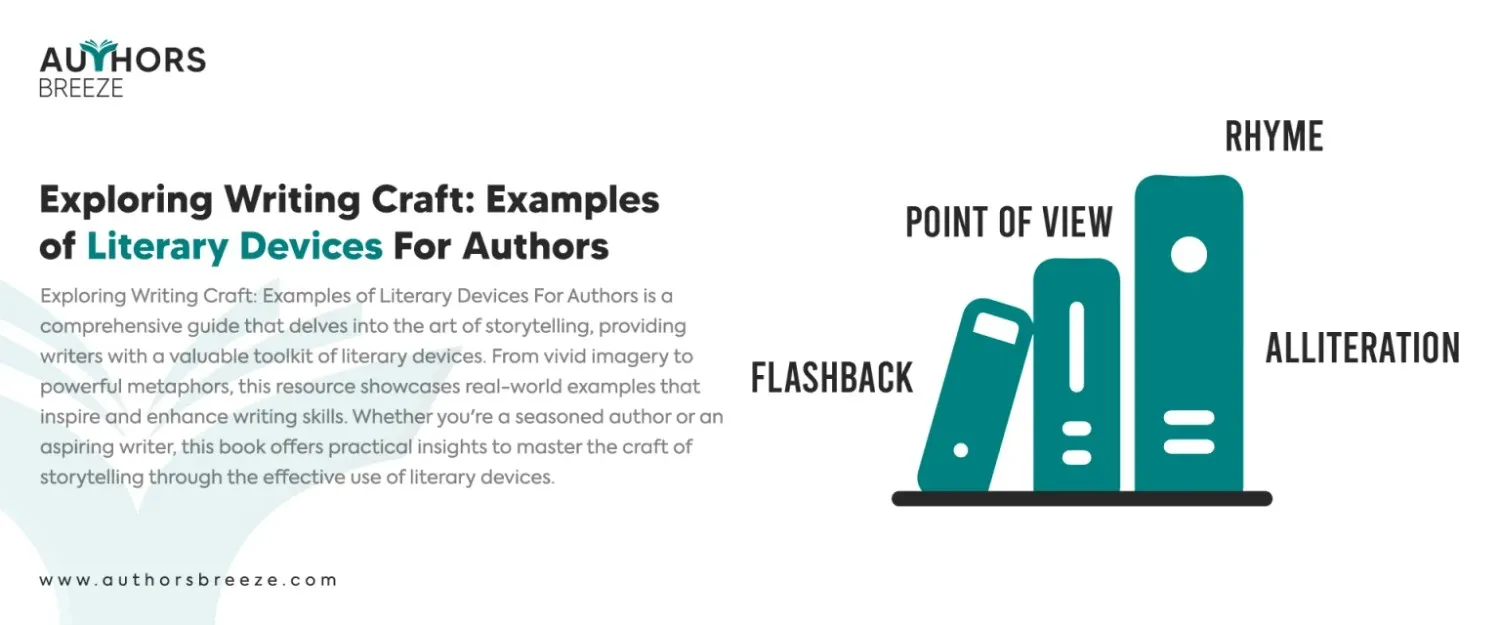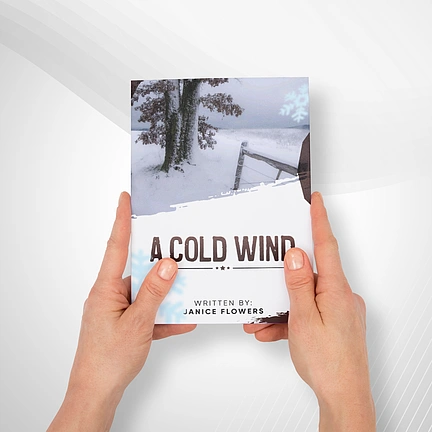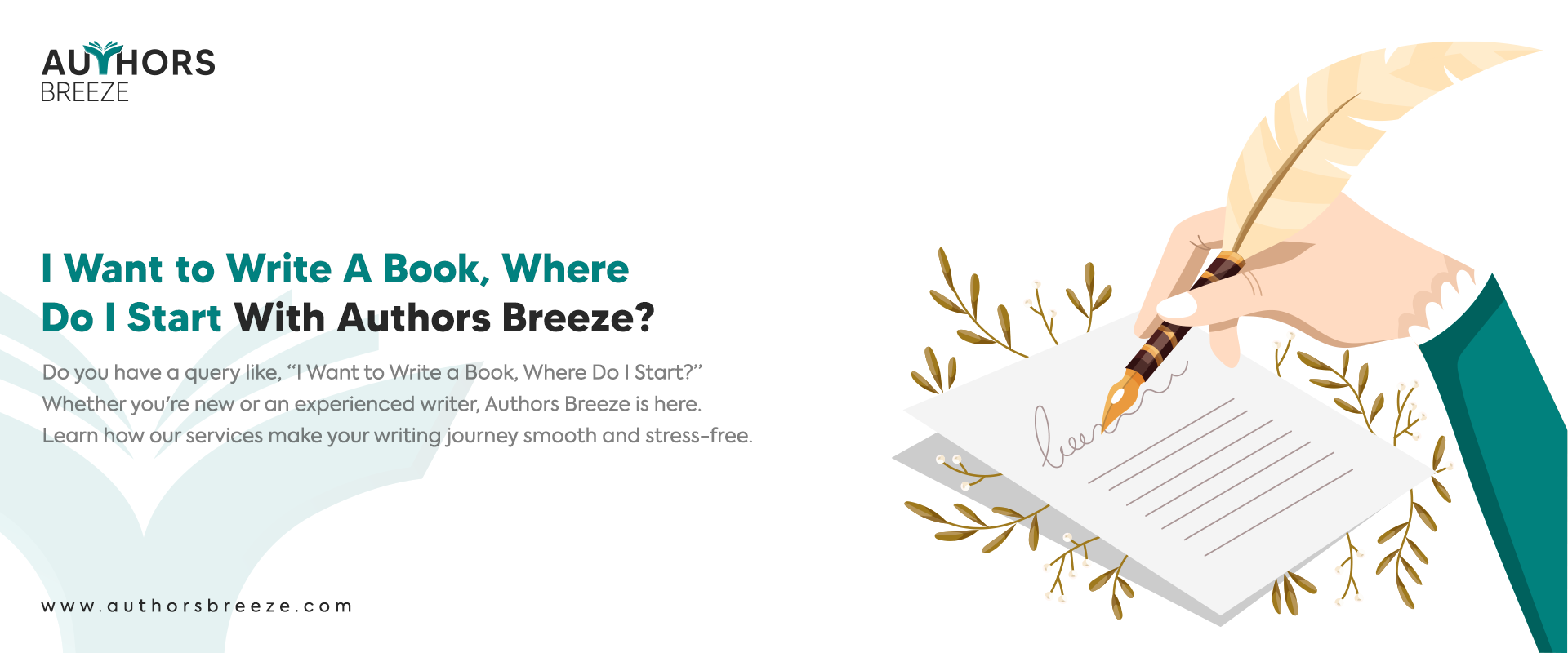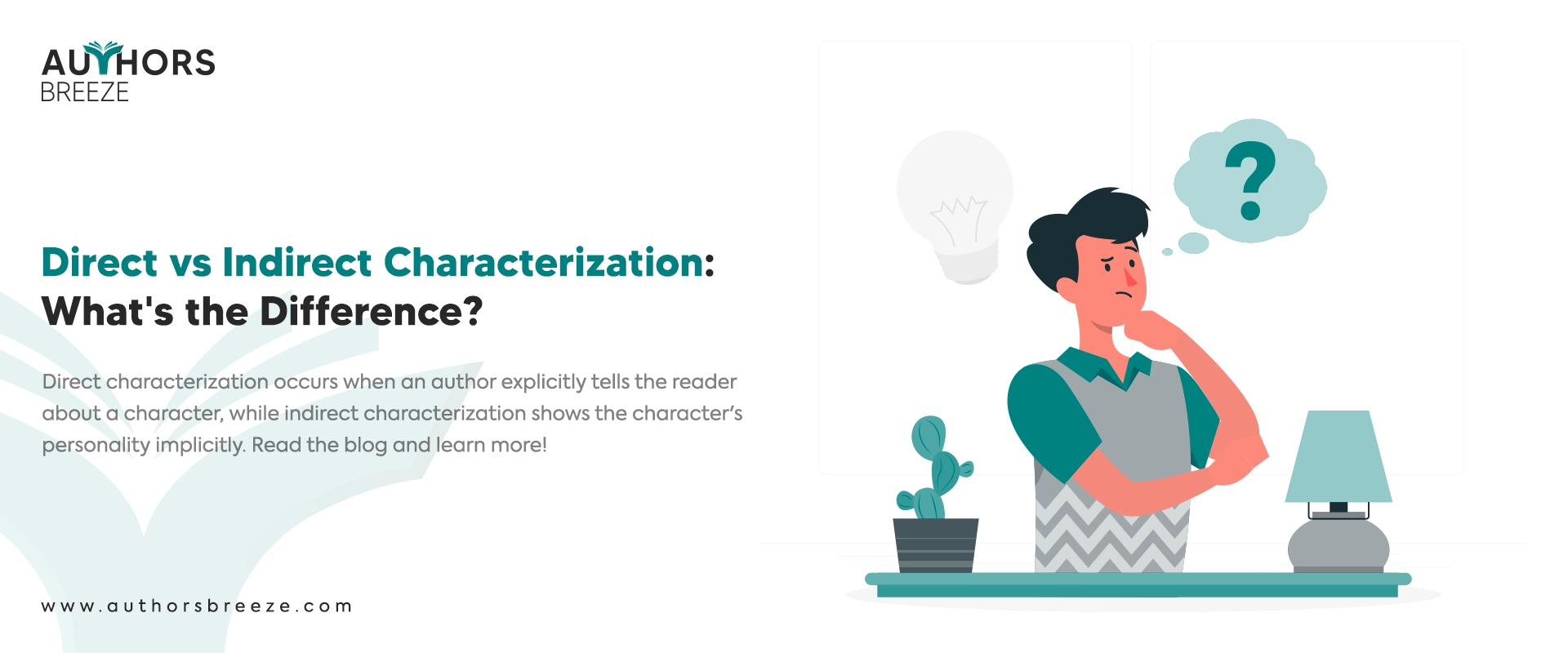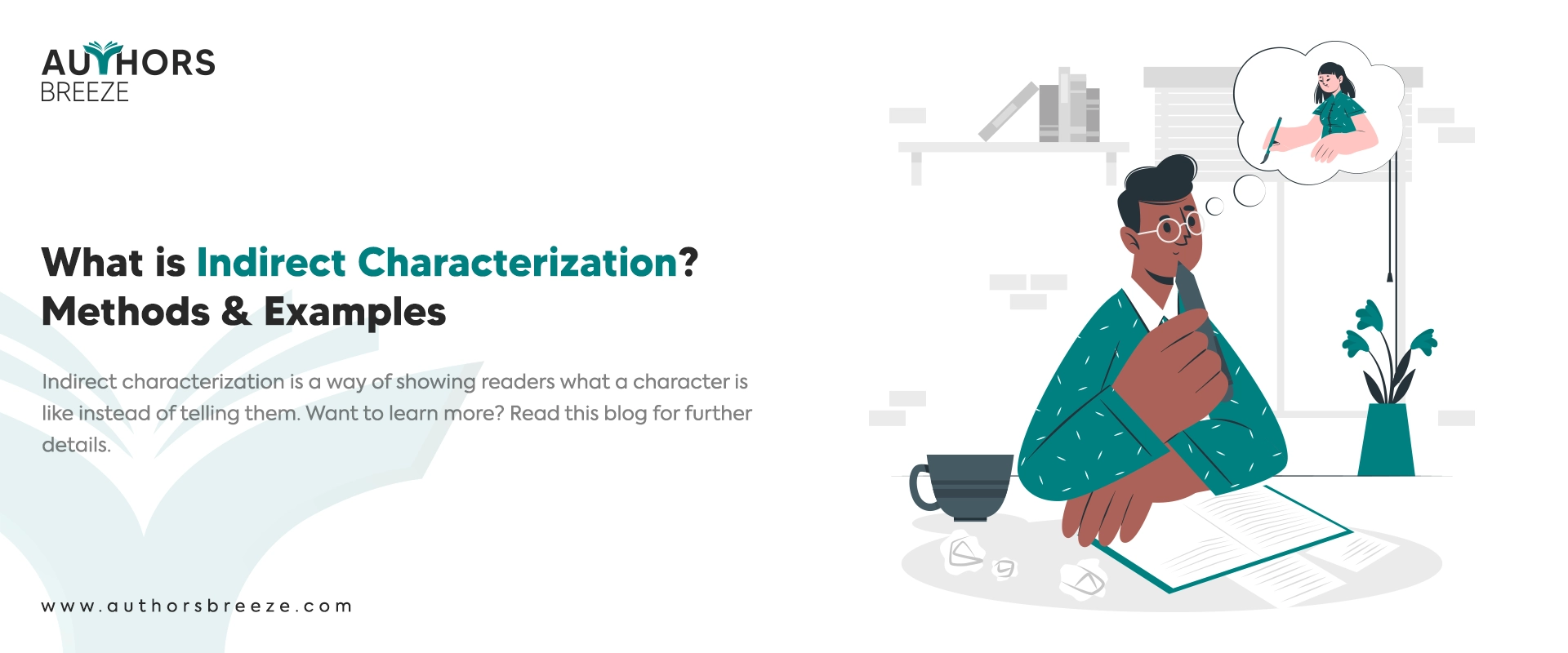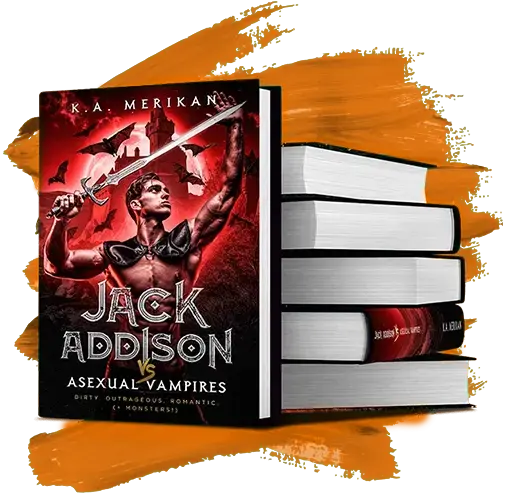Everyone wants to write a perfect book. Authors put in a lot of hard work in order to impress readers. Still, when they review their manuscript, they see something is missing that makes their book incomplete. It is the absence of literary devices in writing. It makes the story feel flat and lacks depth.
What are the Literary Devices?
The term “literary devices” refers to the various techniques and tools that writers use to enhance their writing. Literary devices help them create a desired effect in their literary works. These devices can be found in various forms of literature, including:
- Novels
- Poems
- Plays
- And even non-fiction
Literary devices are employed to engage readers, evoke emotions, and convey meaning. They enhance the overall aesthetic appeal of a piece of writing.
Literary devices encompass a wide range of writing styles that writers employ to achieve different artistic and communicative purposes. These devices can be broadly categorized into several groups, such as
- Figurative language
- Sound devices
- Narrative techniques
- Rhetorical devices
Each of these categories includes specific tools and methods that writers utilize to convey their ideas and craft their narratives.
If writers utilize literary devices, they can add depth, richness, and complexity to their writing. For example, the use of figurative language allows writers to make comparisons and create vivid imagery that engages the senses and imagination of the readers, such as:
- Similes
- Metaphors
Sound devices can enhance the musicality and cadence of a piece of writing, like:
- Alliteration
- Onomatopoeia
- Rhythm
They create a pleasing and memorable reading experience.
Narrative techniques shape the structure and development of a story, such as:
- Foreshadowing
- Flashbacks
- Point of view
They add suspense, depth, and complexity.
Rhetorical devices are employed to persuade, provoke thought, or evoke emotional responses from the reader. For example:
- Irony
- Hyperbole
- Repetition
Literary devices serve as powerful tools for writers to:
- Express their ideas.
- Communicate their messages.
- Create an immersive and impactful reading experience.
These devices, when used effectively, can make a major difference in the way a piece of writing is perceived and understood. It enables readers to engage more deeply with the text and appreciate the artistry behind it.
Benefits of Using Literary Devices List
You can use literary devices list to make your storytelling smooth. It helps your story to be more vibrant and unique. You can utilize literary devices to kill the lack of variety and interest. Therefore, your story will be more intriguing. If you cover literary devices, it will help make your writing wholesome and exciting.
In addition, if some expert or a book reviewer reads your book and sees the use of literary devices list, they will surely be impressed. As a result, it can have several positive outcomes for you as an author, and it will be effective for book advertising as well. Here are some potential effects:
Positive Review
The reviewer may write a positive review. It can greatly enhance the reputation of your book and attract more readers. As a result, it can generate interest, increase sales, and contribute to the success of your book.
Increased Credibility
It can enhance your credibility as a writer. The opinions of the reviewers carry weight in the literary community. So, their recognition of your talent can boost your reputation among readers, fellow authors, and book publishers.
Word-of-Mouth Promotion
When book reviewer sees the literary devices, they will praise your writing. It can encourage readers to spread positive word-of-mouth about your book. Readers who enjoy your book may recommend it to others. It will lead to an organic increase in readership and exposure.
Opportunities for Future Projects
The recognition you get from a book reviewer can also attract the attention of publishers and literary agents. They may approach you with a book deal or offers for future projects based on the strength of your writing showcased in your book.
Literary Devices List
In the world of literature, there are a number of examples of literary devices. Each of them requires their own examples and analysis. Therefore, we will talk about common literary devices.
You can find literary devices in both poetry and prose. So, we have a list of literary devices examples in literature and exercises that you can use and make your writing as creative as possible.
1- Simile
A simile is a figure of speech that compares two different things using the words “like” or “as.” It helps to create vivid images and enhance the understanding of the readers. For instance, “Her laughter rang out like musical notes.”
2- Metaphor
A metaphor is similar to a simile, but it compares two different things by stating that one thing is another. It adds layers of meaning and invites readers to make connections. For example, “His words were arrows piercing through my heart.”
Just like a skilled artist, we can help you master the art of crafting metaphors that breathe life into your prose. Our ghostwriting services ensure that your vision shines through in every word, creating an immersive experience for readers.
3- Personification
Personification gives human qualities or characteristics to non-human entities, such as:
- Animals
- Objects
- Abstract ideas
It brings inanimate objects to life and makes them relatable. A classic example is, “The wind whispered secrets through the trees.
4- Hyperbole
Hyperbole is an exaggeration used for emphasis or dramatic effect. It amplifies a statement to make a powerful impact on the reader. For instance, “I’ve told you a million times to clean your room!”
5- Alliteration
Alliteration is the repetition of the same sound or letter at the beginning of adjacent or closely connected words. It adds rhythm and musicality to the writing. An example is, “Peter Piper picked a peck of pickled peppers.”
6- Onomatopoeia
Onomatopoeia refers to words that imitate or suggest the sound associated with the object or action they describe. It brings sound to life and creates a sensory experience for the reader. For example, “The thunder rumbled ominously in the distance.”
7- Symbolism
Symbolism is the use of objects, characters, or situations to represent abstract ideas or concepts. It adds depth and layers of meaning to the text. An example is a white dove symbolizing peace.
Our proofreaders for hire make sure that your symbolic references are consistent and impactful. So it leaves readers intrigued and eager to unravel the hidden messages within your work.
8- Irony
Irony is a literary device where there is a contradiction between what is expected and what actually occurs. It adds a twist and creates humor or dramatic tension. For instance, a fire station burning down is an ironic situation.
9- Foreshadowing
Foreshadowing is a literary technique used to hint at or suggest events or outcomes that will happen later in the story. It builds suspense and prepares the reader for what lies ahead. An example is a character saying, “I have a bad feeling about this.”
Our audiobook production allows you to add emphasis and create suspenseful moments that enhance the impact of your foreshadowing. We help you captivate listeners with carefully crafted narration and expert sound design.
10- Allegory
An allegory is a narrative where characters, settings, or events represent abstract ideas or moral qualities. It allows for a deeper exploration of themes and messages. The novel “Animal Farm” by George Orwell is an allegory for the Russian Revolution.
11- Allusion
An allusion is a reference to a person, place, event, or work of art that is well-known. It adds depth and layers of meaning by drawing upon shared cultural knowledge. For example, “His love for her was a Romeo and Juliet kind of romance.”
12- Imagery
Imagery involves using vivid and descriptive language to create mental images that appeal to the senses of the readers. It brings scenes to life and allows readers to experience the story. For instance, “The golden sun sank below the horizon, casting a warm, orange glow on the rippling waves.”
We want your visual representation complements your writing. So, you capture the essence of your narrative and attract potential readers. Therefore, we help you create a professional book cover design that grabs the attention and sparks the curiosity of the readers.
13- Repetition
Repetition is the intentional reuse of words, phrases, or sounds to create emphasis or reinforce a particular message. It adds rhythm and makes the writing more memorable. An example is Martin Luther King Jr.’s famous line, “I have a dream.”
14- Rhyme
Rhyme is the repetition of similar sounds, usually at the end of words, to create a musical quality in a poetry book or prose. It adds a pleasing rhythm and can help highlight important ideas. A classic example is, “Twinkle, twinkle, little star.”
15- Tone
Tone refers to the writer’s attitude or feelings toward the subject matter. It sets the overall mood of the piece and influences how readers interpret the text. For example, a sarcastic tone can convey humor or criticism.
16- Point of View
Point of view determines who is telling the story and from what perspective. It shapes the understanding of events and characters to the readers. The three main points of view are:
- First-person (“I”)
- Second person (“you”)
- Third person (“he,” “she,” “they”)
Examples of Point of View:
- I’m also doing this without any help.
- You have no option but to disclose it.
- They were also in a hurry.
17- Flashback
A flashback is a literary device that interrupts the chronological order of a narrative to present an event or scene from the past. It:
- Provides background info.
- Adds depth to characters.
- Reveals key details.
An example is a character reminiscing about their childhood.
18- Satire
Satire is a literary technique that uses humor, irony, or ridicule to criticize and expose human vices, shortcomings, or societal issues. It aims to provoke thought and bring about change. Examples include the works of Jonathan Swift and his satirical essay “A Modest Proposal.”
19- Juxtaposition
Juxtaposition is the placement of two contrasting ideas, characters, or images side by side to highlight their differences. It creates tension, irony or emphasizes certain aspects. For instance, portraying a scene of beauty and destruction in the same passage.
20- Metonymy
Metonymy is a figure of speech in which a word or phrase is substituted with something closely associated with it. It adds layers of meaning and can create powerful imagery. An example is referring to the monarchy as “the crown.”
21- Euphemism
Euphemism is the use of a mild or indirect expression to replace a harsh, offensive, or sensitive one. It allows for polite or sensitive talk while addressing delicate topics. For example, saying “he passed away” instead of “he died.”
22- Oxymoron
An oxymoron is a figure of speech that combines contradictory terms to create a unique and thought-provoking effect. It adds depth and complexity to the writing. An example is “bittersweet” or “living dead.”
23- Assonance
Assonance is the repetition of vowel sounds within words that are close to each other. It adds musicality and a pleasing rhythm to the writing. For instance, “The cat sat on the mat.”
24- Consonance
Consonance is the repetition of consonant sounds within or at the end of words. It creates a musical quality and can enhance the overall impact of the writing. An example is “All’s well that ends well.”
25- Enjambment
Enjambment occurs when a sentence or phrase continues onto the next line or stanza without a pause or punctuation. It adds a sense of flow and rhythm to poetry or prose. For example:
“I wandered lonely as a cloud That floats on high o’er vales and hills.”
26- Synecdoche
Synecdoche is a figure of speech in which a part of something is used to represent the whole or vice versa. It adds depth and symbolism to the writing. For instance, saying “all hands on deck” to refer to needing everyone’s help.
27- Anaphora
Anaphora is the deliberate repetition of a word or phrase at the beginning of successive clauses or sentences. It adds emphasis and rhythm to the writing. Martin Luther King Jr.’s famous speech begins with the repetition of “I have a dream.”
28- Epiphany
An epiphany is a moment of sudden realization or insight experienced by a character. It brings about a profound understanding or change in perspective. For example, a character suddenly understands the true nature of a situation.
29- Parallelism
Parallelism involves using similar grammatical structures, phrases, or clauses to create balance and rhythm in writing. It adds clarity and impact. An example is “Alice likes singing, dancing, and painting.”
30- Anthropomorphism
Anthropomorphism is the attribution of human characteristics or behaviors to non-human entities, such as animals, objects, or natural phenomena. It helps readers relate to the subject and adds a touch of whimsy. For instance, a talking animal or a smiling sun.
31- Assumption
Assumption refers to an underlying belief or idea that is taken for granted, often without explicit evidence or proof. It allows writers to make implicit connections and engage readers. For example, “He assumed she would always be there for him.”
32- Verisimilitude
Verisimilitude is the quality of appearing true to life or realistic within a literary work. It aims to make the narrative believable and relatable to readers. Creating well-developed characters, plausible events, and authentic dialogue contributes to verisimilitude.
33- Anecdote
An anecdote is a brief and interesting story or account that illustrates a particular point or theme. It adds a personal touch and engages the emotions of the readers. For instance, sharing a short story about a childhood experience to support a lesson or argument.
34- Motif
A motif is a recurring element, symbol, or theme that holds value and contributes to the overall meaning of a literary work. It provides unity and depth to the narrative. An example is the motif of the “green light” in F. Scott Fitzgerald’s “The Great Gatsby.”
35- Paradox
A paradox is a statement or situation that appears contradictory or illogical but reveals a deeper truth or complexity. It challenges the assumptions of the readers and invites reflection. For example, “Less is more” or “I can resist anything but temptation.”
36- Suspense
Suspense is a literary device used to create a sense of anticipation, excitement, or tension in the reader. It keeps readers engaged and eager to know what will happen next. An example is leaving a chapter on a cliffhanger. It urges readers to turn the page.
37- Deus ex machina
Deus ex machina, Latin for “god from the machine,” refers to a plot device where a sudden, unexpected event or character resolves a seemingly unsolvable problem. It can be seen as an artificial or contrived resolution. For instance, a previously unknown character appears to save the day.
38- Rhetorical question
A rhetorical question is a question asked for effect or to make a point, not requiring an answer from the reader. It engages readers and encourages them to think or reflect. For example, “Isn’t it ironic?”
39- Connotation
Connotation refers to the emotional or cultural associations that a word carries beyond its literal meaning. It adds layers of meaning and depth to language. For instance, “home” may have connotations of comfort, security, and belonging.
40- Stream of consciousness
Stream of consciousness is a narrative technique that presents a character’s thoughts and feelings in a continuous flow, often without conventional punctuation or structure. It mimics the inner workings of the mind, providing insights into a character’s psyche. An example is James Joyce’s “Ulysses.”
While the above literary devices are valuable resources, without any doubt, using them shouldn’t be the goal when aiming to publish a book. Devices should serve as tools to enrich the overall narrative rather than overshadowing the basic elements of a great book.
FAQs
What is a Major Literary Device?
In writing, we have two kinds of major tools:
- Literary elements.
- Literary techniques.
The literary elements are like the big picture of a story. They include things like:
- Setting (the time and place of the story)
- Theme (the main idea or message)
- Mood (the atmosphere or feeling)
- Allegory (when characters or events symbolize something deeper)
On the other hand, literary techniques are more focused on the details of the writing. They involve sole words and sentences. Examples of techniques are:
- Euphemisms (The use of polite or indirect words to replace something harsh or unpleasant)
- Alliteration (To repeat the same sound at the beginning of words in a sentence)
So, literary elements give us the overall structure and meaning of a story. On the other hand, in literary techniques, we use specific word choices and sentence structures. It helps make the writing more exciting and impactful.
What is the Difference Between Literary Devices and Rhetorical Devices?
Literary devices are like special tools that writers use to make their writing more exciting and captivating. They are like tricks that add flavor and color to the words on the page. For example, when writers use vivid descriptions to paint a picture in your mind or compare things in a way that helps you understand them better, or even make objects or animals seem like they have human thoughts and feelings.
On the other hand, rhetorical devices are strategies that speakers or writers use to make their points more convincing and influential. It is like they are using clever tactics to grab your attention and make you think a certain way. They might repeat keywords or phrases to make them stick in your mind, create a sense of balance and symmetry in words, or ask questions that don't really need an answer but make you ponder and consider their perspective. They may also try to tap into your emotions to make you feel a certain way and support their argument.
In simple terms, literary devices make writing more exciting and imaginative. In contrast, rhetorical devices make speeches or writing more persuasive and influential. They are both tools that writers and speakers use but for slightly different purposes.
What are Some Literary Devices?
Some of the devices from the literary devices list are:
1- Personification
Giving human qualities to inanimate objects or animals.
2- Hyperbole
An exaggerated statement or claim that is not meant to be taken literally.
3- Symbolism
The use of objects, characters, or actions to represent abstract ideas.
4- Alliteration
The repetition of consonant sounds at the beginning of words.
5- Onomatopoeia
The use of words that imitate sounds.
6- Allusion
A reference to a well-known person, event, or piece of literature.
7- Repetition
The deliberate use of words or phrases for emphasis or effect.
8- Metonymy
The use of a related term to represent a larger concept.
Conclusion
If you try to learn literary devices and their usage, you can benefit from them both as a reader and writer. When you have a grasp on literary devices, you can gain insight into the intended meaning behind an author’s work. On the other hand, writers can effectively engage and connect with their readers.
Literary devices have the greatest impact when used in moderation. Avoid excessive usage, as it can result in abundant figurative language. As a result, it leads to both a saturation of flowery expressions and potential confusion.
When incorporating literary devices, strive for coherence and relevance. It will enhance the experience of the readers. It is crucial not to impose them unnaturally.
Well, this is all we have to tell you in this guide of literary devices list. Our writers at Authors Breeze have mastery and expertise in using literary devices in their writing. So, if you want to craft an impressive book, our writers can help.

